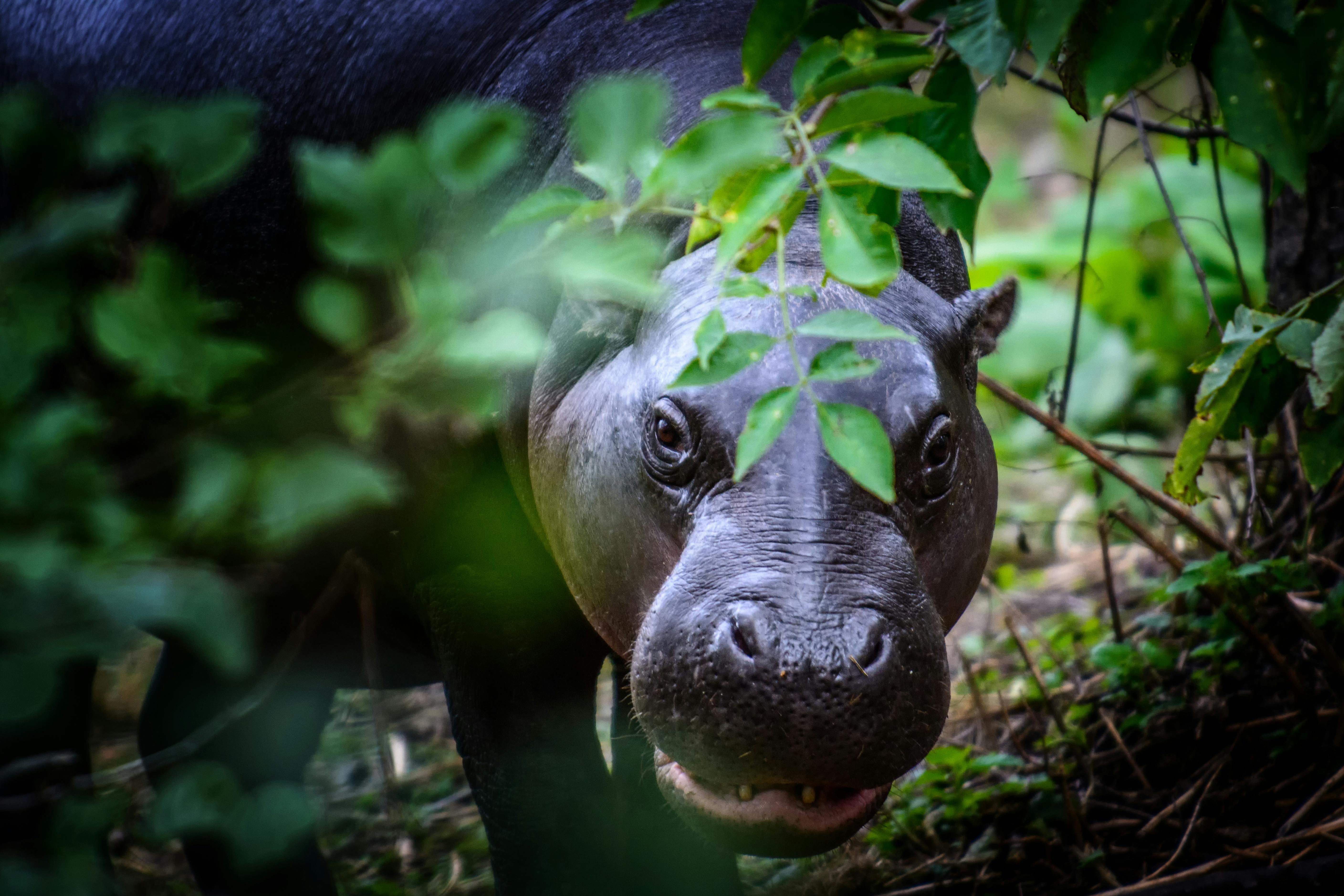Eveline
Eveline came to Blijdorp in September 2013.

Using a series of tunnels and trails through dense vegetation, the pygmy hippopotamus makes its way through the West African jungle. There, they mark their territory by spraying poop around with their wagging tails. Unfortunately, the forests which the pygmy hippopotamus inhabit are under pressure. That is why Rotterdam Zoo contributes to the European population management program and to scientific research on pygmy hippos in the wild.

about 35 years
80 centimeters
1.4 meters
160 - 275 kilograms
Pygmy hippopotamuses are medium-sized herbivores with thick, dark grey skin. They are ungulates, with four toes on each foot. They are closely related to the larger hippopotamus, but spend less time on average in the water. In addition, pygmy hippos live by themselves, except during the mating season or when they have young. In this too, they differ from hippos, which usually live in large groups.
...that pygmy hippos snatch plants with their lips and not with their teeth?
The pygmy hippopotamus is native to West Africa. Nowadays, it only occurs in Sierra Leone, Liberia and the Ivory Coast. It also used to live in Nigeria, but has not been spotted there recently. It lives mainly in densely forested rainforests with plenty of water.

Pygmy hippos play a vital role for other plants and animals in West African national parks. Their diet is quite varied, and they don't digest most of the fruits they consume well. By excreting undigested seeds, they help spread and fertilize many types of fruits and seeds. This is crucial for many other animal species that rely on a diverse range of plant species. Because the pygmy hippopotamus is so important to its habitat, it is also referred to as a ‘keystone species’. Like a keystone in an arch, it keeps its habitat stable.

The number of pygmy hippos in the wild is continuously declining. This decline is due to several factors. The population is directly reduced as humans poach pygmy hippos for their meat. Furthermore, various body parts, such as the skull, legs, and toes, are utilized in traditional African medicine. Their habitat is also shrinking due to the establishment of palm oil, coffee, and rubber plantations, as well as farmlands. Since pygmy hippos come out at night and live in dense forests, they are hard to spot. Hence, it remains uncertain which regions are most critical for the conservation of this species.
Because this species lives in dense forest areas, it's not entirely clear how many pygmy hippos there are currently. To determine this, Rotterdam Zoo collaborates with the IBREAM Foundation. They train sniffer dogs to detect pygmy hippo droppings. These dogs are partly trained at Blijdorp Zoo by first introducing them to the scent of pygmy hippo droppings. Then, the dogs practice by tracking down the pygmy hippos in the zoo based on scent. Once in Ivory Coast, the sniffer dogs locate droppings and footprints. At these spots, IBREAM researchers set up camera traps. These traps help count the number of pygmy hippos in those areas.
The pygmy hippopotamus enclosure is part of the monumental Rivierahall. Both inside and outside there is a small pool, where the pygmy hippos can cool down on a hot day. Not only does Rotterdam Zoo participate in scientific research, but we also contribute to the European population management program of this endangered species.
Discover the latest news about the pygmy hippopotamus.